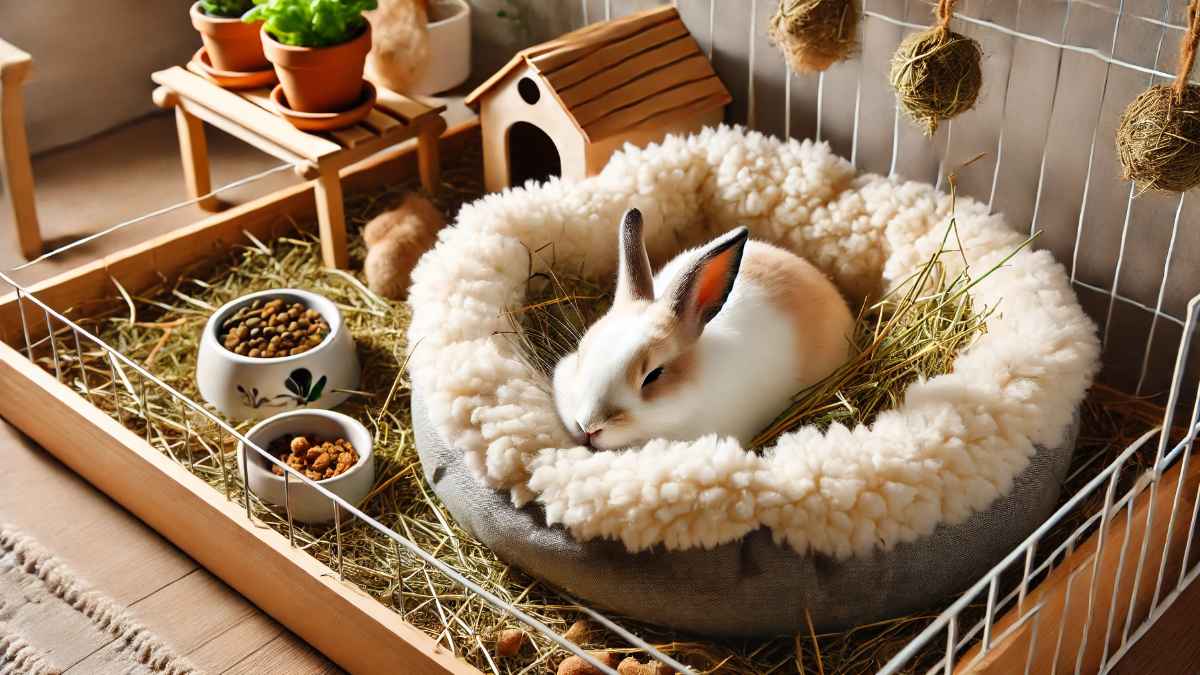Introduction
Rabbits are delicate animals that require a clean, comfortable, and safe living environment. One of the most crucial aspects of setting up a rabbit cage is choosing the right flooring. The wrong material can cause discomfort, injuries, or health problems like sore hocks. So, what should you put on the bottom of a rabbit cage? In this guide, we will explore the best flooring options to ensure your bunny stays happy and healthy.
Best Flooring Options for a Rabbit Cage
1. Soft Bedding Materials
Soft bedding provides a comfortable surface for your rabbit to rest and move around. Some popular choices include:
Paper-Based Bedding
- Absorbent and controls odors well
- Safe and non-toxic for rabbits
- Soft and gentle on paws
Hay or Straw
- Provides natural comfort
- Encourages nibbling, which is good for digestion
- Requires frequent changing to prevent mold
Fleece Liners
- Washable and reusable
- Soft and comfortable
- Provides traction and prevents slipping
2. Mats and Rugs
Mats and rugs provide a cushioned surface while preventing direct contact with hard cage flooring.
Grass Mats
- Edible and safe for rabbits
- Provides natural enrichment
- Easy to replace when worn out
Rubber or Foam Mats
- Soft and comfortable
- Non-slip surface prevents injuries
- Must be non-toxic and free from harmful chemicals
3. Solid Flooring Options
Solid floors are ideal to prevent sore hocks and injuries.
Corrugated Plastic or Linoleum
- Waterproof and easy to clean
- Provides a smooth, non-slip surface
- Durable and long-lasting
Plywood Covered with Vinyl
- Prevents foot injuries
- Adds insulation to keep the cage warm
- Should be covered with soft bedding for added comfort
What to Avoid in a Rabbit Cage
1. Wire Flooring
- Causes sore hocks and foot injuries
- Uncomfortable for prolonged sitting and hopping
- Allows urine and droppings to fall through, but still requires a soft surface
2. Newspaper or Cardboard Alone
- Lacks absorbency and gets messy quickly
- Not durable for long-term use
3. Cedar or Pine Shavings
- Contains harmful aromatic oils that can cause respiratory problems
- Can lead to liver damage in rabbits over time
How to Maintain a Clean and Safe Cage Floor
1. Regular Cleaning
- Remove waste daily to prevent odors and bacteria buildup
- Change bedding at least twice a week
- Wipe down hard surfaces with pet-safe disinfectants
2. Monitor Your Rabbit’s Feet
- Check for redness, swelling, or signs of sore hocks
- Provide additional padding if needed
3. Rotate Flooring Materials
- Switch between different soft materials to keep the environment fresh
- Experiment with different options to find what your rabbit prefers

FAQ Section
1. Can I use a towel as flooring in a rabbit cage?
Yes, but ensure it is not frayed, as rabbits may chew and ingest loose threads, which can cause digestive issues.
2. What is the best flooring to prevent sore hocks in rabbits?
Soft fleece liners, grass mats, and paper-based bedding help prevent sore hocks by providing cushioned support.
3. Can I use puppy pads in my rabbit’s cage?
Yes, but only under fleece liners to prevent chewing and ingestion of plastic materials.
4. How often should I clean the cage flooring?
Spot clean daily and replace bedding or liners every 2-3 days to maintain hygiene.
5. Is hay a good bedding material for rabbits?
Yes! Hay is comfortable, safe, and edible, but it must be changed frequently to prevent mold and odor buildup.
6. Can rabbits live on a wire-bottom cage?
No, wire floors can cause serious foot injuries and should always be covered with a soft, solid surface.
Conclusion
Choosing the right flooring for your rabbit’s cage is essential for their well-being. Avoid wire flooring and opt for soft, absorbent, and safe materials like fleece liners, hay, or paper bedding. Regular cleaning and monitoring your rabbit’s feet will help ensure a happy and healthy environment. By selecting the best cage bottom, you’re providing your bunny with a safe and comfortable home.

